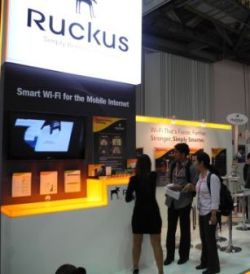Telecom Lead India: Ruckus Wireless has launched new Smart Wi-Fi products, technologies, professional services and training packages.
The new Wi-Fi solutions are expected to address challenges faced by service providers to support simultaneous Wi-Fi users within high-capacity venues and locations.
The new Ruckus Smart Wi-Fi solutions include high-capacity outdoor Smart Wi-Fi access points (APs), the ZoneFlex 7782-N, a compact and lightweight system. These APs combine smart sector antenna technology that focuses Wi-Fi signals within a 30-degree beamwidth with software capabilities.
In the case of extremely dense venues such as stadiums or exhibit halls, these very dense populations introduce significant stress on the network and require specific design considerations such as the density and placement of Wi-Fi APs, the number of clients needing to connect, radio frequency (RF) noise and dealing with co-channel interference.
Towerstream, a wireless broadband provider offering wireless access and backhaul services in 11 major markets in the United States, is among the first customers to deploy the new ZoneFlex 7782-N access point.
“For Towerstream, being able to explicitly focus RF energy in a specific direction and automate channel selection is essential to providing Wi-Fi connectivity within high-density metro deployments where APs are mounted in close proximity to each other,” said Arthur Giftakis, VP of engineering for Towerstream.
High-capacity Ruckus Smart Wi-Fi technology has also been deployed in a number of high-profile, high-density venues including the Time Warner Cable Arena in Charlotte, North Carolina. The TWC Arena was recently host to the Democratic National Convention, which drew a crowd of 24,000 delegates, many armed with multiple mobile devices including laptops, tablets, and smartphones.
“The key to high-density Wi-Fi is to focus and limit signals within a given area so contention to the medium can be controlled,” said Giftakis. “Directional antennas limit co-channel interference which is a gating item in most high-density deployments. Doing this lets us deliver much higher speeds and a better overall experience to users. We are seeing 50 to 60Mbps of performance being delivered to newer smartphones within New York City. Now that’s impressive.”






